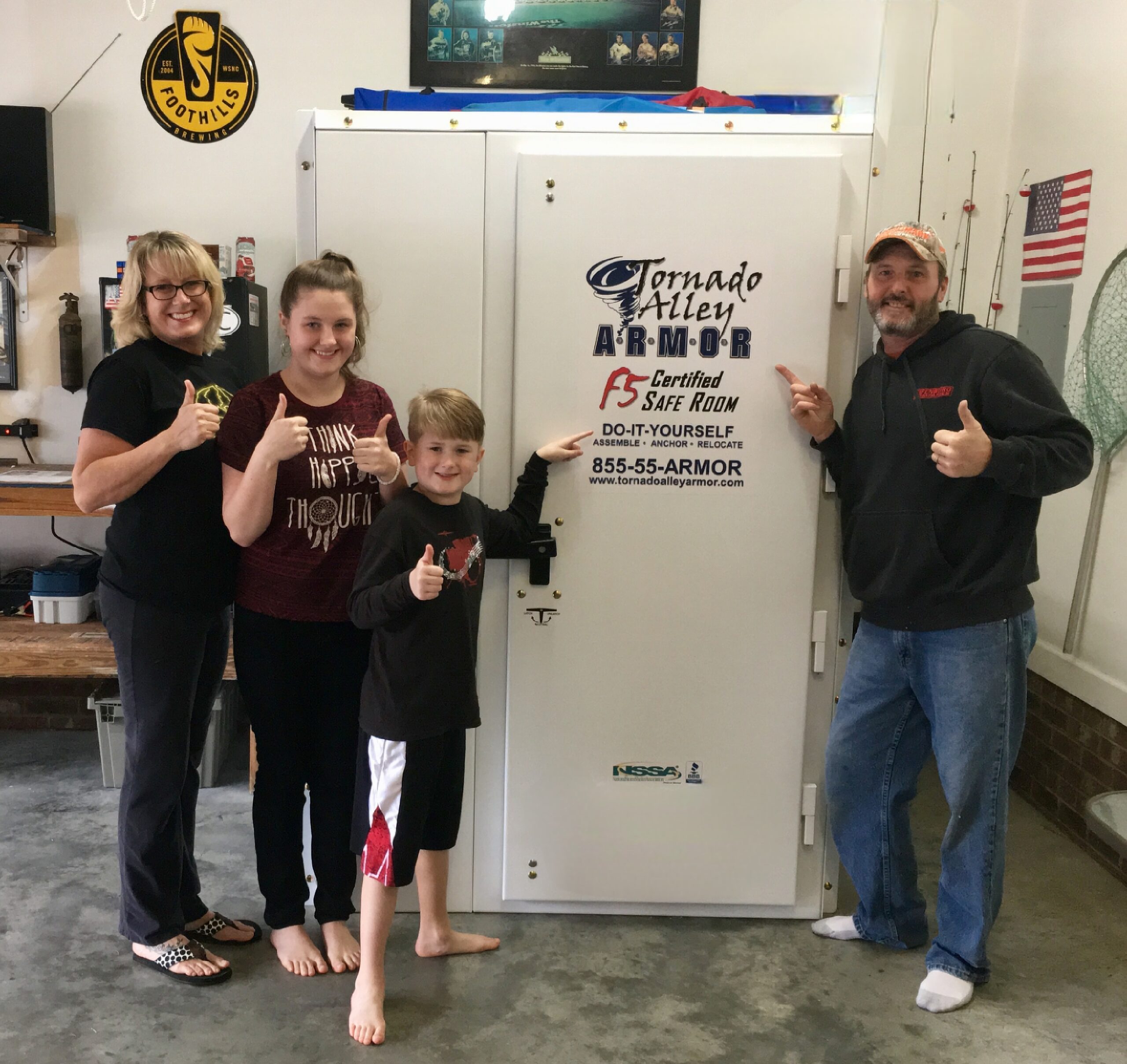Researchers who toured Moore after the May 20, 2013 F-5 tornado said above ground storm shelters held up great in the storm and can be a better choice than underground storm cellars. Aboveground storm shelters held up exceptionally well in the tornado and could be a better choice than a traditional underground storm cellar, said Larry Tanner, a research associate at the National Wind Institute at Texas Tech University.
Ricky Stover rode out the storm in Moore. He and his family didn’t have a safe room so they took to their cellar.
“We locked the cellar door when we saw it coming and it got louder and the next thing you know you see the latch coming undone and you couldn’t reach for it and it ripped open the door. Glass and debris started slamming on us,” Ricky said.
Tanner was among a team of researchers from the institute that toured the damaged areas after the Moore tornado. They examined how different types of structures held up in the storm, with particular attention given to storm shelters.
The institute tests and approves shelters for manufacturers based on standards set by the Federal Emergency Management Agency. They use giant air cannons to fire debris at speeds simulating strong tornadoes.
Tanner said researchers found 19 above ground safe rooms or storm shelters in the damage path or near the damage path of the storm. All survived.
“They all performed great,” Tanner said. “We continue to have great success stories both in Joplin and in Oklahoma City.”
In some cases, all that was left after the tornado passed were the shelters. Tanner said above ground shelters have had a hard time catching on in Oklahoma, where people have been told for decades that the safest place during a tornado is underground. This just isn’t true. FEMA states that if a shelter is built to their specifications it doesn’t matter if it’s above or below ground as far as survival rate. What it comes down to it options and other safety issues such as entrapment, flooding, etc. FEMA calls them “safe rooms” whether they’re above or below ground, with construction standards that give people “near absolute protection” from injury or death by extreme winds.
Tanner said underground shelters also did well in the Moore tornado. One had its door torn off by the storm and another nearly had the door torn off, which can be dangerous.
“In the 1999 storm, I documented a below-ground shelter where the door had blown off and all kinds of debris was in that shelter,” Tanner said.
Although underground shelters are more common, Tanner said above ground shelters are often a better choice. They don’t get damp and smelly like underground storm cellars. Most people will wait to the last minute before going to an underground shelter because it isn’t a pleasant place to be, he said.
Above ground shelters are more useful because they can be used as storage sheds if they are outside and closets if they are safe rooms built into the house. Underground shelters also have stairs, which can cause access problems for the disabled or older people who have trouble with mobility. It is also easier to get pets into an above ground shelter.
Above ground shelters are also less susceptible to leaving those inside trapped after a storm.
“I talked to an 80-year-old lady who had real trouble getting into her shelter during the Moore storm because of the stairs,” Tanner said. “She had to have a neighbor help her lock the door. Then she had to have a neighbor dig her out when the storm passed.”
Tanner said data has shown approved above ground shelters can protect people even during the strongest tornadoes.
Amidst the debris in the path of the EF-5 tornado that tore through Moore we found safe rooms that survived; both above and below ground.
FEMA says in the right safe room your family will have near absolute protection even in storms whipping up to 250 miles per hour.
Greg Stephens and his family took to their safe room as the deadly Moore tornado descended on them.”Usually the ones that come around here they kind of come close but never had a direct hit,” said Greg.This time it was a direct hit. The storm sucked the door open on the family’s underground safe room.”It was scary in respect that I thought I might lose someone in my family.”
It’s a worst case scenario: 250 mph wind with flying debris.
Larry Tanner, research associate at the Wind Research Center, says most importantly your safe room must be designed and built to FEMA guidelines. “They’re all safe if they are tested products,” said Tanner.
However, in a below ground safe room you face the risk of debris blocking the exit, or flooding.The good news: No one has ever been killed in an approved safe room whether above or below ground.Tanner says safe rooms built to FEMA guidelines handle a 3,000 pound vehicle being dropped on them no problem.”The 57 Cadillac draping over the sides of the shelter. That’s virtually what we see all the time,” Tanner said.
Expert forensic engineering examination of above-ground shelter and safe room performance during the 2011 Tuscaloosa and 2011 Joplin outbreaks as well as the May 20, 2013 Moore, Oklahoma tornadoes documented that properly constructed shelters and safe rooms consistently survive super tornadoes. “In my 15 years of doing storm damage research and storm shelter research, we have never documented any deaths or injuries in above ground tested safe-rooms or failures of tested safe-rooms. This includes the storms of Joplin 2011 and Moore 2013,” Larry Tanner, Texas Tech University Department of Construction Engineering and Engineering Technology.
Taken word for word from FEMA’s website: “A20. As long as a safe room is designed to meet or exceed the criteria in FEMA P-320 (FEMA, 2008a) and FEMA P-361 (FEMA, 2008b), it will offer the same near-absolute protection whether it is above or below ground.” You can read this for yourself at http://www.fema.gov/safe-rooms/frequently-asked-questions-tornado/hurricane-safe-rooms#Q10




